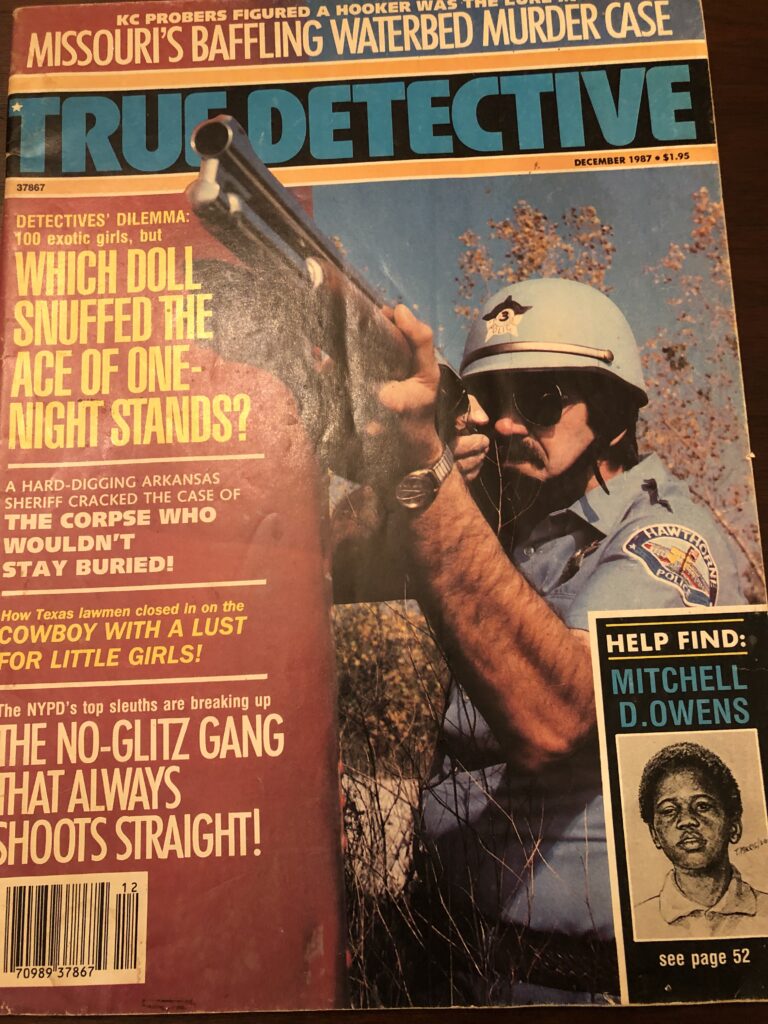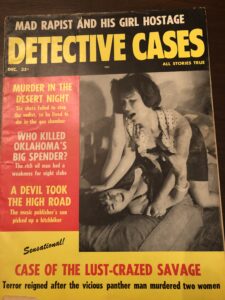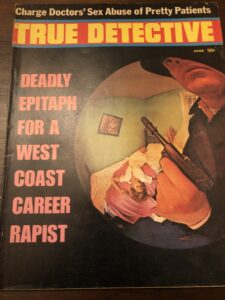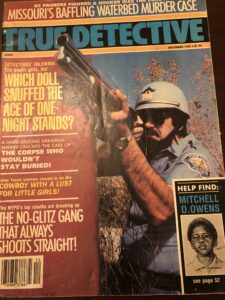By Joseph St. John
There is no denying that America is obsessed with true crime, but it is nothing new. Also, it is not necessarily bad. People should be interested in the legal system and how criminals are affecting our day-to-day lives. We also need to be cognizant that our legal system should be working for everyone. That includes both the victim and the accused.
Murder is obviously overrepresented in the true crime genre because the human mind seems drawn to the macabre and sinister. As I have written in the past, Monsters Matter. This may make people uncomfortable, but it is true. Humans are often drawn to things that make us uncomfortable.
One of the first of the true crime magazines was the Police Gazette, which was first published in 1845. Focusing on crime, outlaws, and even sports, the Gazette proved that America had an appetite for law-breaking and the dark side of life. Twenty years before the end of the Civil War, people were clamoring for the tales of bad guys, mischief, and torrid affairs. They still are today.
Magazines and “Dime Store” novels would be the rage for decades. Both in fact and fiction, the “Who Done It” and the scandalous would fill bookstores, magazine racks, and newsstands. The American people could not get enough of it. It was – and is – a national fascination. It dominates our networks, streaming services, and downloads to this day.


No periodical ever ruled the culture like True Detective. It spurred a collection of copycat magazines that permeated through the “Golden Age” of pulp. Often seen as lurid and debased, it set the standard for “shock.” The covers often depicted women in distress and law enforcement in action. First published in 1924, True Detective told factual stories, looked for crime solutions, and warned the public of the dangers of our society. It did all this while never failing to entertain its audience. Its goal was to excite and to tantalize. When it ceased publication in 1995, it was the end of an era.
True Crime Goes Mainstream
In 1966, True Crime got a facelift and an introduction to the mainstream. No longer relegated to the back of the bookstore, Truman Capote blew the doors off the old concepts of the genre. His culture-shifting book, In Cold Blood sent shockwaves throughout the literary world. The tale of the deaths of the Clutter family in Kansas and their murderers, Richard Hickock and Perry Smith, created a new and more favorable view of crime novels. It was a story told with compassion and introspective.
 In an interview with George Plimpton in 1966, Capote was asked about the response to his book, He said,
In an interview with George Plimpton in 1966, Capote was asked about the response to his book, He said,
“I’ve been staggered by the letters I’ve received, their quality of sensibility, their articulateness, the compassion of their authors. The letters are not fan letters. They’re from people deeply concerned about what it is I’ve written about. About 70 percent of the letters think of the book as a reflection on American life, this collision between the desperate, ruthless, wandering, savage part of American life, and the other, which is insular and safe, more or less…For example, Perry wasn’t an evil person. If he’d had any chance in life, things would have been different.”
Capote demonstrated a different, if not surprising, take on crime. It was a story about people and their conditions. It was not a tale of black or white or good or bad guys, but a commentary on the human condition. It was a game-changer in regard to how crime stories would be written. The literary landscape had been changed forever.
In 1974, with the publication of Vincent Bugliosi’s Helter Skelter, the deal was done. True crime was now mainstream and a moneymaker. The movies and TV projects that sprang from both novels showed that true crime was part of the American fiber. Everyone noticed, especially the media.
SGC and True Crime
A few years ago, my childhood friend, Robert “Joey” Baker and I discussed starting a podcast focusing on politics and law and order. Robert is a practicing attorney in Michigan, and I have thirty years’ experience in law enforcement, so the focus on crime was natural. What was different, however, that was Robert had worked on the case of Gary Leiterman, who had been convicted in 2005 of the 1969 Murder of Jane Mixer. Jane had been listed as one of the victims of the infamous Michigan Murders. Through a series of questionable situations, Gary’s DNA was found on an article of Ms. Mixer’s clothes. But, before jumping to conclusions, a drop of blood was also found on Jane’s hand and that blood belonged to John Ruelas, who was four years old at the time of the murder. Add that to other lab mishaps, and an interesting case was unfolding before our eyes.
As a result of these conversations, Two Average Joes was born. Season Two is underway and the Michigan Murders are our focus. The first episode focused on the origins of the “true crime” phenomena. Take the time to watch this video.
Southern Gothic Creations will continue our series on True Crime also. We will be looking backwards and forward to capture the essence of crime in our culture. We also ask that our readers share any ideas, comments, and stories with our site. Working together we can create a full spectrum of crime and law and order.
JBS




